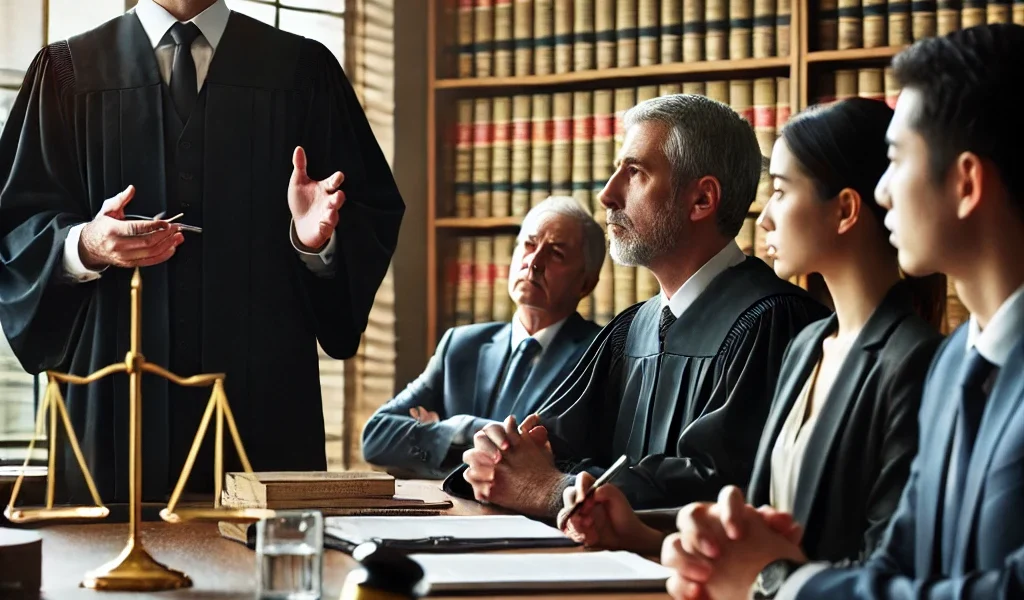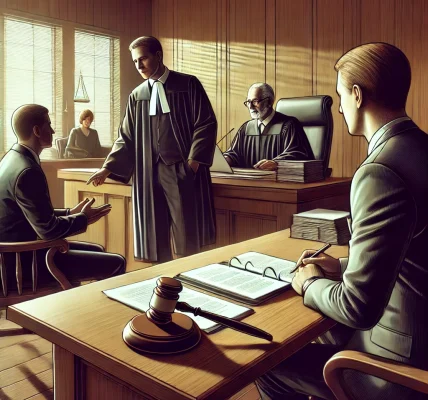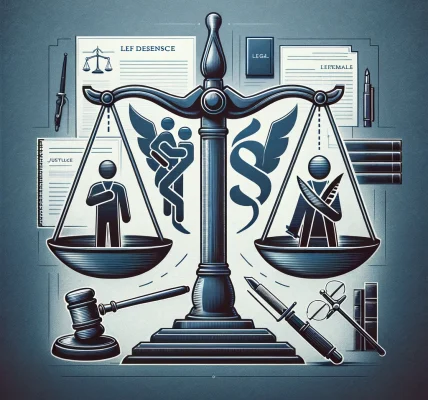Introduction
Navigating a criminal trial can be complex and intimidating. Understanding the different stages of a trial can help defendants, victims, and even the general public comprehend the legal process better. This guide breaks down each step of a criminal trial, from the initial arrest to the final verdict, ensuring clarity on how the justice system works.
1. Arrest and Charges
The criminal trial process typically begins with an arrest. A law enforcement officer may arrest an individual if there is probable cause or an arrest warrant issued by a judge. After the arrest, the defendant is taken into custody and read their Miranda Rights, which include the right to remain silent and the right to an attorney.
Filing of Charges
After an arrest, the prosecutor reviews the evidence and determines whether to file formal charges. If there is insufficient evidence, the case may be dismissed at this stage. Charges can range from misdemeanors to felonies, depending on the severity of the crime.
2. Initial Appearance and Bail Hearing
Shortly after the arrest, the defendant makes an initial court appearance, where a judge informs them of their charges, rights, and potential penalties.
Bail Determination
During this hearing, the judge decides whether the defendant can be released on bail or must remain in custody until trial. Bail is an amount of money paid to secure the defendant’s release, ensuring they appear in court when required. In cases involving serious offenses, bail may be denied.
3. Arraignment and Plea
At the arraignment, the defendant formally hears the charges and enters a plea:
- Guilty: The defendant accepts the charges and sentencing moves forward.
- Not Guilty: The case proceeds to trial.
- No Contest: The defendant does not admit guilt but accepts the consequences.
The court may also appoint a public defender if the defendant cannot afford a private attorney.
4. Pre-Trial Motions and Discovery
The discovery phase involves the exchange of evidence between the prosecution and defense. Attorneys collect witness statements, police reports, and other relevant materials.
Pre-Trial Motions
Attorneys may file motions to influence trial proceedings, including:
- Motion to Dismiss: Requesting case dismissal due to lack of evidence.
- Motion to Suppress Evidence: Seeking to exclude evidence obtained unlawfully.
- Motion for Change of Venue: Moving the trial to another location for fairness.
5. Jury Selection (Voir Dire)
If a jury trial is requested, both legal teams participate in jury selection, a process known as voir dire. Potential jurors are questioned to ensure they can be impartial. Either side can challenge jurors based on bias concerns.
6. Opening Statements
Once the jury is selected, both sides present their opening statements, outlining their case. The prosecution speaks first, followed by the defense. These statements provide an overview of the evidence and arguments they plan to present.
7. Presentation of Evidence and Witness Testimonies
Prosecution’s Case
The prosecution presents its case first by:
- Calling witnesses to testify.
- Introducing physical evidence (documents, forensic reports, surveillance footage, etc.).
- Cross-examining witnesses.
Defense’s Case
The defense has the opportunity to refute the prosecution’s claims by:
- Presenting their own witnesses.
- Challenging the credibility of the prosecution’s evidence.
- Raising an affirmative defense (e.g., self-defense or alibi).
8. Closing Arguments
After all evidence is presented, attorneys make their closing arguments, summarizing their case and persuading the jury. The prosecution argues for a guilty verdict, while the defense emphasizes doubt and inconsistencies.
9. Jury Instructions and Deliberations
The judge provides the jury with legal instructions, explaining the laws relevant to the case and how they should interpret the evidence. The jury then enters deliberations, where they discuss the case privately and attempt to reach a unanimous verdict.
10. Verdict and Sentencing
Verdict
The jury returns with one of the following verdicts:
- Guilty: The defendant is convicted and moves to the sentencing phase.
- Not Guilty: The defendant is acquitted and released.
- Hung Jury: If jurors cannot agree, a mistrial may be declared, leading to a retrial.
Sentencing
If found guilty, the judge determines the sentence, which may include:
- Fines
- Probation
- Imprisonment
- Community service
Factors such as the defendant’s criminal history and case severity influence the sentence.
11. Appeals Process
If convicted, the defendant may file an appeal, arguing legal errors affected the verdict. An appeals court reviews trial records and may overturn the conviction or order a new trial.
Conclusion
Understanding the stages of a criminal trial is crucial for anyone involved in the justice system. Each phase, from arrest to possible appeal, serves a critical role in ensuring fairness and due process. Whether you are a defendant, legal professional, or simply an interested observer, knowing these steps can provide clarity and insight into the legal world.




